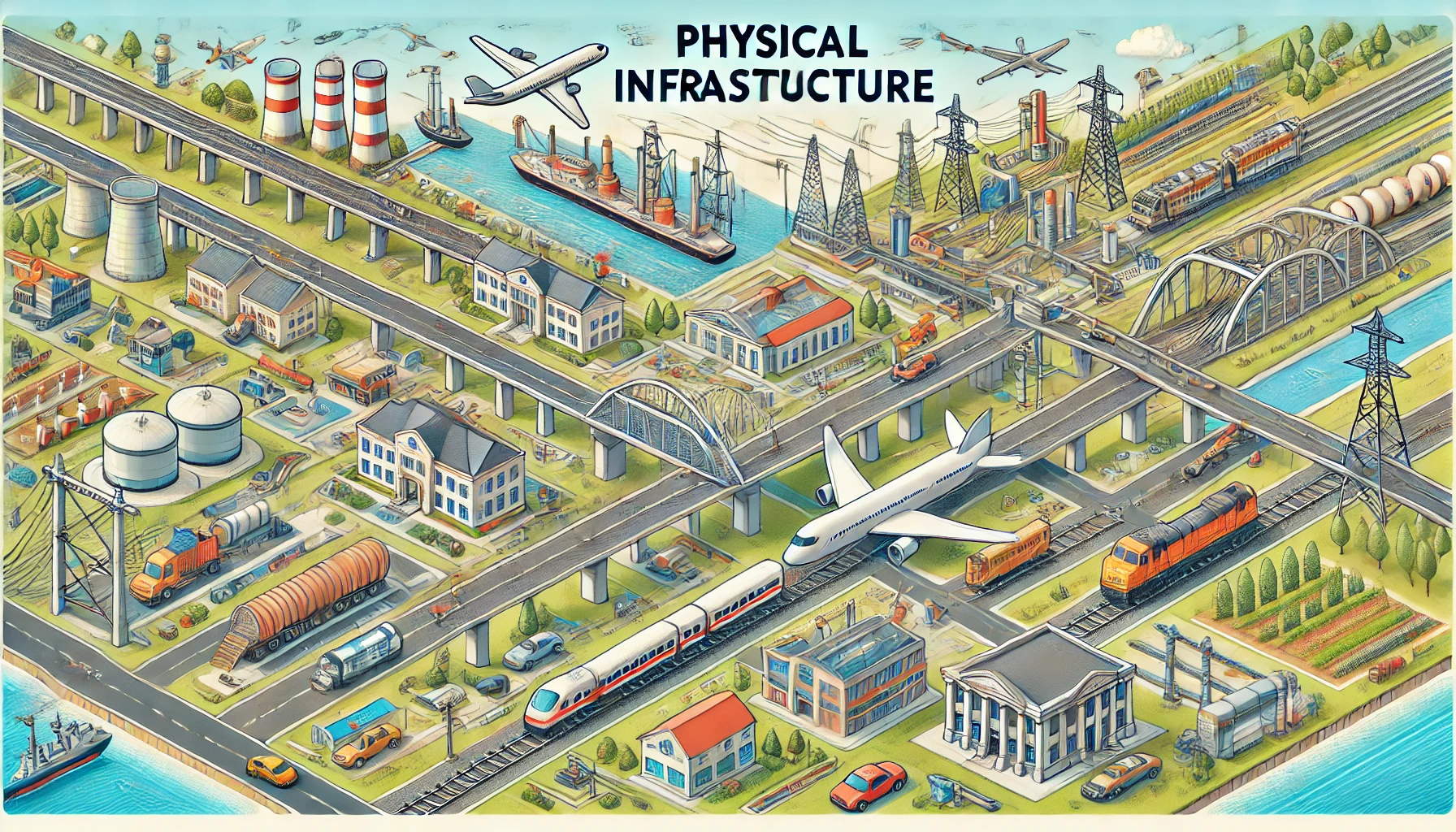Physical infrastructure refers to the fundamental facilities and systems that support the functioning of an economy and society. It includes the built environment and physical structures essential for transportation, communication, energy supply, water management, and other basic services.
Components of Physical Infrastructure:
- Transportation Infrastructure: Roads and Highways, Railways, Airports, Ports and Harbours, and Bridges and Tunnels.
- Communication Infrastructure: Telecommunication Networks and Broadcasting Facilities
- Energy Infrastructure: power plants, electricity grids, Oil and Gas pipelines
- Water Supply and Sanitation: Water Treatment plants, Water distribution systems, Sewage and wastewater treatment
- Educational and Healthcare Facilities: Schools and Universities, Hospitals and Clinics
- Public Buildings and Facilities: Government Buildings, Parks and Recreational Facilities

Why are they Important?
- Economic Growth:
- Physical infrastructure is a foundation for economic development. It enables efficient production, distribution, and exchange of goods and services, reducing costs and enhancing productivity.
- Quality of Life:
- Adequate infrastructure improves living standards by providing essential services such as clean water, electricity, healthcare, and education.
- Connectivity and Accessibility:
- Infrastructure improves connectivity within and between regions, facilitating trade, tourism, and communication. It also enhances accessibility to remote areas.
- Attracting Investment:
- Robust infrastructure is a key factor in attracting domestic and foreign investment, as it reduces business operating costs and improves market access.
- Environmental Sustainability:
- Well-planned infrastructure can contribute to environmental sustainability through efficient resource use, reduced emissions, and sustainable waste management practices.
- Social Stability:
- Access to essential services and facilities contributes to social stability and reduces inequalities by providing opportunities for education, healthcare, and employment.
Physical infrastructure is essential for the functioning and growth of economies and societies. It supports a wide range of activities, from everyday life to business operations and governance. The development, maintenance, and enhancement of infrastructure are critical for ensuring sustainable economic growth, improving quality of life, and achieving environmental and social goals.

